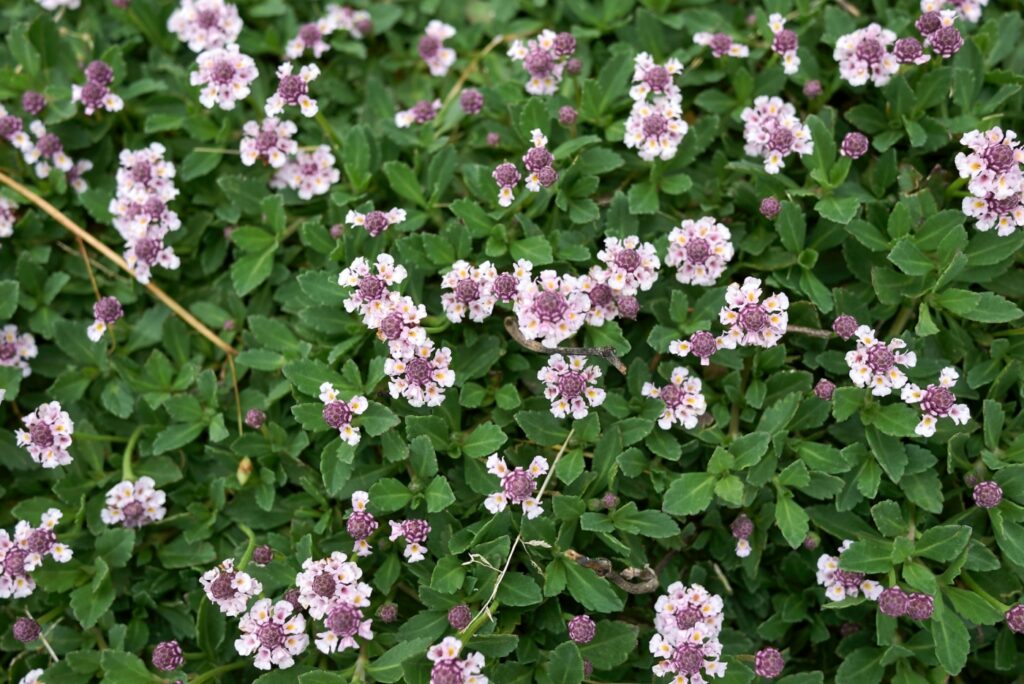
About 10 years ago, we traded our fescue for UC Verde buffalograss. The transformation took several months, but our grass has held up well against the 100+ degree summers. It demands much less water, so we can be more generous in irrigating our fruit trees and vegetables. At the time we installed it, there were few other drought-tolerant groundcovers available. Although it is beautiful, we are still plagued by weeds. Oxalis is especially obnoxious due to its tendency to splash its itty-bitty seeds everywhere when touched.
Recently I’ve been seeing quite a few ads for Kurapia, a new drought-tolerant ground cover that has been marketed as a turfgrass replacement. I was intrigued, especially since it’s been touted for its ability to outcompete weeds.
Kurapia (Lippia nodiflora) is related to verbena and is a low-growing flowering herbaceous ground cover. It tolerates partial shade, but when planted in full sun it will produce cute little white flowers tinged with pink or purple. It’s also tolerant of a variety of soil conditions, including clay, sand, loam, or even saline. If you live near the beach, this groundcover may grow where regular turfgrass can’t.
Regular, deep watering and monthly mowing is all the care it needs (once established). Roots that reach ten feet below the soil surface make it well-suited for erosion control, even on steep slopes. It spreads by runners that can become very dense once established – this is how it can choke out those pesky weeds. The commercially available varieties are sterile (don’t produce seeds), so it is unlikely to become invasive.
One of the major drawbacks is cost. Kurapia is sold as plugs, and each tray costs over $150. Site preparation is the same as any other plug-started ground cover. The soil must be weed-free and have a good irrigation system for complete watering coverage. Even, regular watering is important for the establishment of a healthy kurapia lawn. Due to its dense network of surface runners, Kurapia can be subject to fungal disease. Avoid overwatering and run irrigation only in the morning to give surface moisture time to evaporate during the daytime. Any fungal problems can usually be resolved by adjusting irrigation and applying a standard antifungal treatment.
Kurapia is suitable only in warmer climates. The foliage will die back when the outside temperatures fall to 38F or lower, and the entire plant will not survive a hard freeze.
If you live in a hot, dry region subject to watering restrictions, this ground cover may work for you.
Los Angeles County
mglosangeleshelpline@ucdavis.edu; 626-586-1988; http://celosangeles.ucanr.edu/UC_Master_Gardener_Program/
Orange County
ucceocmghotline@ucanr.edu; 949-809-9760; http://mgorange.ucanr.edu/
Riverside County
anrmgriverside@ucanr.edu; 951-683-6491 ext. 231; https://ucanr.edu/sites/RiversideMG/
San Bernardino County
mgsanbern@ucanr.edu; 909-387-2182; http://mgsb.ucanr.edu
